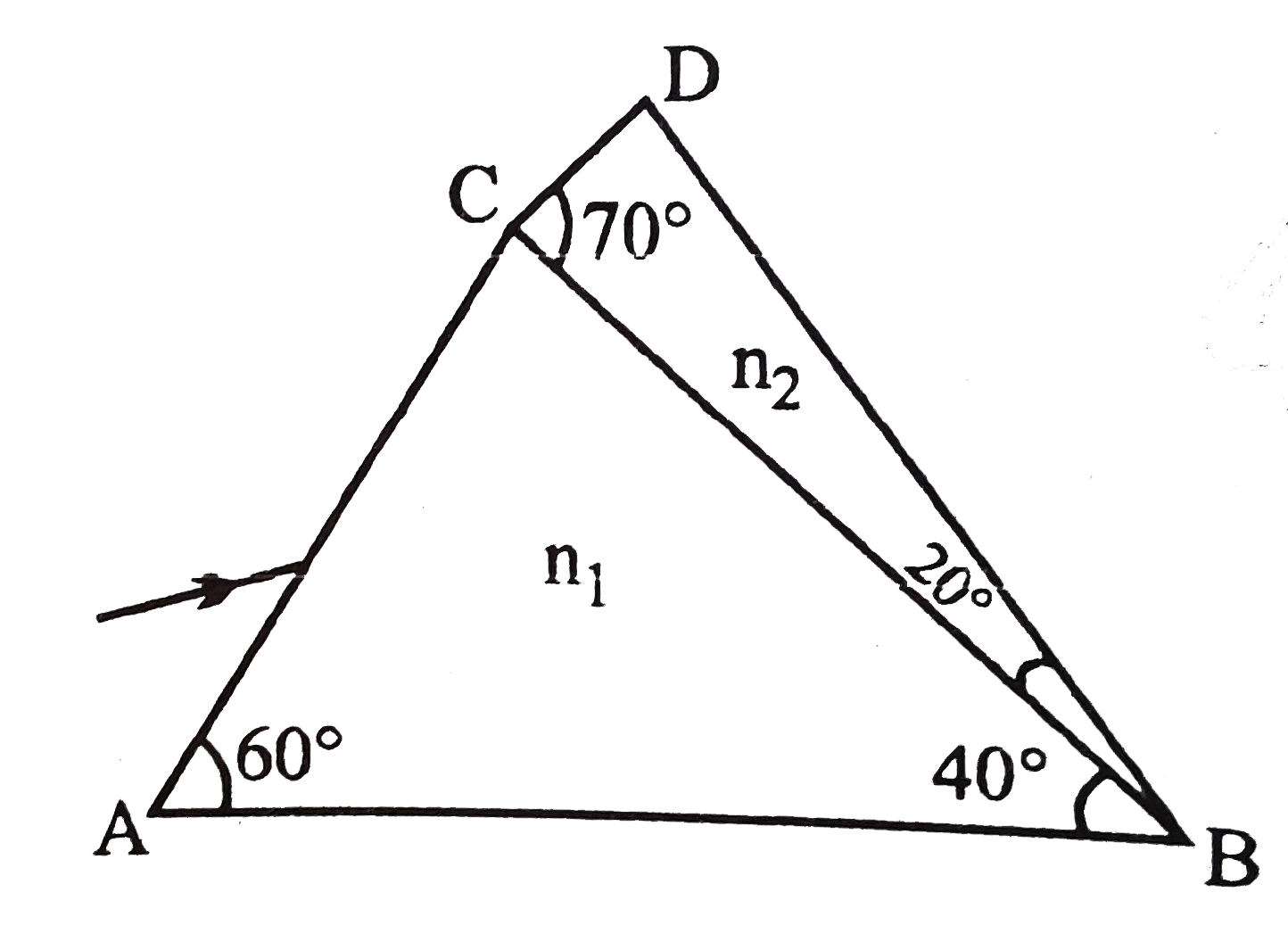Three equal masses of 1 kg each are placed at the vertices of an equilateral ΔPQR and a mass of 2kg is placed at the centroid O of the triangle which is at a distance of √2m from each the verticles of the triangle. Find the force (in newton) acting on the mass of 2 kg.Solution in Gujrati
2
√2
1
zero
The correct Answer is:D
Step by step video & image solution for Three equal masses of 1 kg each are placed at the vertices of an equilateral Delta PQR and a mass of 2kg is placed at the centroid O of the triangle which is at a distance of sqrt(2)m from each the verticles of the triangle. Find the force (in newton) acting on the mass of 2 kg. by Physics experts to help you in doubts & scoring excellent marks in Class 12 exams.
Updated on:21/07/2023Topper's Solved these Questions
- GRAVITATIONBOOK - ALLEN CHAPTER - GRAVITATIONEXERCISE - EXERCISE 2
26 Videos
- GRAVITATIONBOOK - ALLEN CHAPTER - GRAVITATIONEXERCISE - EXERCISE 3
11 Videos
- GRAVITATIONBOOK - ALLEN CHAPTER - GRAVITATIONEXERCISE - BOX-4
14 Videos
- GEOMETRICAL OPTICSBOOK - ALLEN CHAPTER - GEOMETRICAL OPTICSEXERCISE - subjective
14 Videos
- KINEMATICS-2DBOOK - ALLEN CHAPTER - KINEMATICS-2DEXERCISE - Exercise (O-2)
47 Videos
Similar Questions
Two satellites of earth S1 and S2 are moving in the same orbit. The mass of S1 is four times the mass of S2. Which one of the following statements is true?
View SolutionThe change in the value of acceleration of earth toward sun, when the moon coomes from the position of solar eclipse to the position on the other side of earth in line with sun is :
(mass of moon =7.36×1022 kg, orbital radius of moon =3.8×108 m.)
View SolutionThe mean radius of the earth's orbit round the sun is 1.5×1011 . The mean radius of the orbit of mercury round the sun is 6×1010m. The mercury will rotate around the sun in
View SolutionA prism of refractive index n1 & another prism of reactive index n2 are stuck together without a gap as shown in the figure.The angle of the prisms are as shown. n1&n2depend onλ,the wavelength of light according to n1=1.20+10.8×104λ2&n2=1.45+1.80×104λ2 where λ is in nm.

(i)Calculate the wavelength λ0for which rays incident at any angle on the interfaceBCpass through without bending at that interface.
(ii) for light of wavelength λ0,find the angle of incidencei on faceACsuch that the deviation produced by the combination of prism is minimum.
View SolutionA particle is moving in xy-plane .At certain instant the components of its velocity and acceleration are as follows ux=3m/s,uy=4m/s,ax=2m/s2anday=1m/s2. The rate of change of speed at this moment is
View SolutionThree equal masses of 1 kg each are placed at the vertices of an equilateral Delta PQR and a mass of 2kg is placed at the centroid O of the triangle which is at a distance of sqrt(2) m from each the verticles of the triangle. Find the force (in newton) acting on the mass of 2 kg.
View SolutionThree equal masses of 2kg each are placed at the vertices of an equilateral triangle and a mass of 4 kg is placed at the centroid of the triangle which is at a distance of √2 m from each of the vertices of the triangle. The force, (in newton) acting on the mass of 4 kg is
View SolutionThree equal masses of 1 kg each are placed at the vertices of an equilateral triangle which is at a distance of sqr(2) m from each of the vertices of the triangle .The force . In newton , acting on the mass of 2 kg is
View SolutionThree equal masses of 1.5 kg each are fixed at the vertices of an equilateral triangle of side 1 m. What is the force acting on a particle of mass 1 kg placed at its centroid ?
View SolutionThree equal masses of 1 kg each are placed at the vertices of an equilateral triangle PQR and a mass of 2 kg is placed at the centroid O of the triangle which is at a distance of √2m from each of the vertices of the triangle. The force, in newton, acting on the mass of 2 kg is :
View SolutionThree particles, each of mass m, are placed at the vertices of an equilateral triangle. What is the force acting on a particle of mass 2m placed at the centroid D of the triangle ?
View SolutionA particle of mass m is placed at each vertices of equilateral triangle. If the particle of 5 kg is placed at the centroid of triangle, then find the gravitational force on it. The distance between centroid to vertice is 2 m.
View Solutionसमबाहु त्रिभुज PQR के प्रत्येक शीर्षों पर 1kg का द्रव्यमान और केन्द्रक O पर 2kg का द्रव्यमान रखा जाता है। केन्द्रक से प्रत्येक शीर्ष के बीच की दूरी √2m है, अतः 2kg के द्रव्यमान पर कार्यरत बल न्यूटन में होगा
View SolutionA mass of 1kg is placed on each of the vertices of an equilateral triangle PQR and 2kg on the nucleus O. Distance between each vertex from the nucleus sqrt2m Is, so the force acting on a mass of 2kg will be in newtons.
View SolutionThree equal masses each of 1 kg are placed at vertices of an equilateral triangle of side 10m. Find the position of centre of mass.
View Solution
